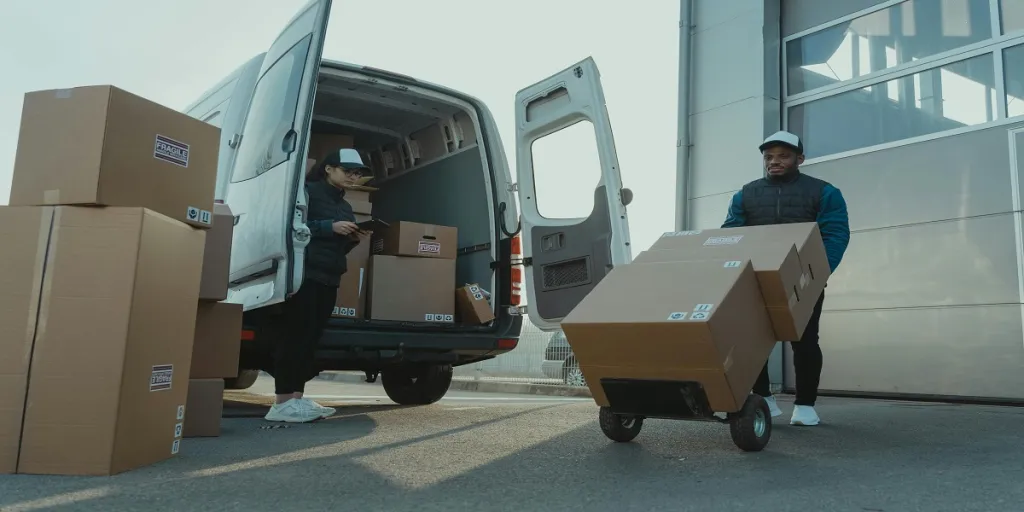What do Walmart and Uber have in common in terms of logistics and supply chain management, besides their renowned international brandings and successful business image? On a surface level, both Walmart and Uber own successful crowdsourced delivery platforms, namely Walmart Spark and Uber Eats. Taking a closer look reveals a key similarity: their vision of leveraging a gig-based workforce model since 2015, nearly a decade ago, reflecting their early commitment to innovative workforce solutions.
Today, crowdsourced delivery has evolved beyond just grocery or food products and expanded to various other fields, including different types of e-commerce deliveries. Read on to find out more about crowdsourced delivery, its benefits and challenges, the expanding horizons as well as future trends, particularly on its transformative impact on global ecommerce, all in refined simplicity and straightforward elucidation.
Table of Contents
Understanding the concept of crowdsourced delivery
Benefits of crowdsourced delivery for ecommerce
Risks and challenges of crowdsourced delivery
How crowdsourced delivery works in ecommerce
Current trends and the future of crowdsourced delivery
A digital collaborative logistics mesh
Understanding the concept of crowdsourced delivery

Crowdsourced delivery, often termed “crowdshipping,” or “crowd sending”, is a delivery method that leverages the local community to deliver goods and parcels, effectively tapping into the flexible workforce of the gig economy. Instead of relying on traditional, centralized courier service, these deliveries utilize the power of the local crowd, depending on contracted professionals or gig workers who might be freelancers, independent contractors, part-time workers, or individuals who simply deliver packages as they go about their daily routines with their own vehicles.
These couriers often coordinate through digital platforms, using specialized crowdsourced delivery apps to connect companies or people who need logistics services with a flexible group of drivers. Such a delivery model offers businesses a large network of both part-time and full-time couriers, who enjoy the flexibility and independence of gig work while meeting the growing need for quick, personalized, and adaptable shipping services.
In essence, to retailers and e-commerce companies in particular, this is akin to a generic food delivery or ride-sharing service, where instead of delivering fast food orders or offering rides, they deliver the ecommerce and retail parcels directly to consumers.
Benefits of crowdsourced delivery for ecommerce
- Foster a streamlined cost management approach
By utilizing decentralized, virtually on-demand local couriers, crowdsourced delivery fundamentally provides a cost-effective delivery model for ecommerce businesses as it obviates traditional logistics expenses like fleet management, warehouse operations, and associated staffing. This enables a scale-back cost management approach and eventually means more savings with overall lower shipping costs to ecommerce companies.
- Same-day delivery becomes a practical reality
Same-day delivery has all along sounded luxurious or hardly attainable in view of the inherently complex nature of such arrangements, which traditional carriers find challenging to manage due to several operation issues. Firstly, the unpredictable nature of daily sales and the high cost of maintaining a ready delivery team often make same-day delivery staffing demanding and expensive. Traditional routing and dispatching are also not suited for the quick, unique demands of same-day delivery, leading to intricate organizational issues. Moreover, standard tracking methods, which are usually only updated at significant transit points, fall short of providing the real-time, detailed location updates customers expect for urgent deliveries.
In contrast, crowdsourced delivery, which relies on independent, on-demand couriers, allows businesses to scale with demand efficiently. This is achievable by assigning the nearest couriers for faster, more adaptable delivery via delivery apps that also offer real-time, detailed tracking, allowing full delivery route and time tracking transparency.
- Enhanced customer satisfaction
The nature of crowdsourced delivery services, which ensures goods are delivered at times convenient for the recipients, is increasingly aligning with the heightened expectations of customers in this fast-moving digital world, particularly among the younger, tech-savvy generation. By coordinating deliveries for when recipients are likely to be available, this approach effectively reduces the time and expense associated with repeated delivery attempts.
Overall, the key characteristics of crowdsourced delivery, which include real-time package monitoring and flexible scheduling such as pick-any-day delivery options, remove uncertainty from delivery times and provide superior customer service, ultimately boosting customer contentment.
Risks and challenges of crowdsourced delivery

- Quality control and security
Quality control and security are the main concerns, as reliance on couriers, primarily part-timers or non-professionals, may lead to trust issues concerning goods’ integrity, especially in cases of lost packages or damaged items, as well as potential legal and insurance complexities. Consequently, trust and reputation management emerge as additional complexities stemming from these concerns, with users increasingly demanding robust systems to mitigate potential fraud and maintain service quality.
- Customer experience management and scalability
The ability to provide a consistent and reliable delivery service experience may be challenging, as the reliability of deliveries can significantly vary compared to in-house or standardized services provided by a centralized, professional logistics company, due to differences in training, culture, and standards. Consequently, ecommerce shippers may inevitably encounter difficulties in maintaining consistent customer experiences and, in turn, struggle with the indirect representation of their brand at the customer’s doorstep. Meanwhile, scalability can be contingent upon the fluctuating availability of local couriers, presenting logistical hurdles during periods of high demand.
How crowdsourced delivery works in ecommerce

The operational process of crowdsourced delivery for ecommerce closely mirrors that for personal consumers, albeit with a touch of added responsibility and coordination. To initiate the process, ecommerce senders have the option to access the digital platform to check for instant quotes with the necessary pickup and delivery details and select a courier accordingly.
Once all details are set and the courier is selected, the delivery process commences. The couriers undertake to follow specific instructions provided by the senders, including all the necessary loading/ unloading tasks to ensure that the items are delivered safely and placed precisely where needed.
Finally, as the delivery is underway, all involved parties can actively monitor the progress through the platform for real-time tracking and updates of every step. Payment, together with any applicable additional gratuity can be made upon completion of the delivery. Customer feedback on the overall experience can also be collected and evaluated. The entire process within the platform exemplifies transparency and convenience, providing ecommerce senders with more control over their delivery experience while reducing logistical overheads and enhancing delivery speed.
Current trends and the future of crowdsourced delivery
Technological advancements are significantly shaping the crowdsourced delivery trends, be it the current or the future anticipated trends. The current trends in crowdsourced delivery, for example, are heavily gravitating towards technologies like IoT and cloud computing, covering innovations in route optimization as well as drone delivery experiments for quicker service. In addition, data management, innovative software, and strategic warehouse placement are among the current development trends enhancing logistics infrastructure in crowdsourced delivery.
The trajectory of crowdsourced delivery is on a steep upward climb, with projections indicating significant expansion. A global research report revealed that close to 90% of retailers expect to employ crowdsourced delivery for certain orders by 2028. Numerous businesses and freelancers capitalizing on the burgeoning trend are believed to be driving such promising future growth.
Advancements in crowdsourced delivery processes are anticipated to be continuously made through sophisticated route planning and customer communication technologies. These improvements are projected to refine more dynamic estimated times of arrival and the agility to modify routes instantaneously, ensuring deliveries are both rapid and dependable.
A digital collaborative logistics mesh
In the ever-evolving world of ecommerce delivery, crowdsourced delivery emerges as an innovative solution that echoes the operational model of ride-sharing services, yet is specially crafted for direct-to-consumer retail products. It empowers ecommerce platforms with the ability to reduce costs significantly while providing same-day delivery services that cater to the increasingly fast and flexible delivery with real-time tracking demands sought by consumers. The system not only bolsters savings for businesses but also enriches the customer experience, all viewed from an engaging angle.
Despite the benefits, challenges related to quality, brand consistency, and scalability should not be overlooked. Both the current and future trends of crowdsourced delivery are deeply influenced by technological advancements, with the prevailing focus on route optimization through data management and software, as well as innovative hardware deployment such as drone delivery. Looking forward, the trend toward decentralized delivery networks utilizing advanced technology promises to further revolutionize the industry.
Discover more transformative approaches in logistics and supply chain management and remain abreast of the latest trends and insights by regularly visiting Alibaba Reads. Quality insights and fresh updates await.

Looking for a logistics solution with competitive pricing, full visibility, and readily accessible customer support? Check out the Alibaba.com Logistics Marketplace today.




